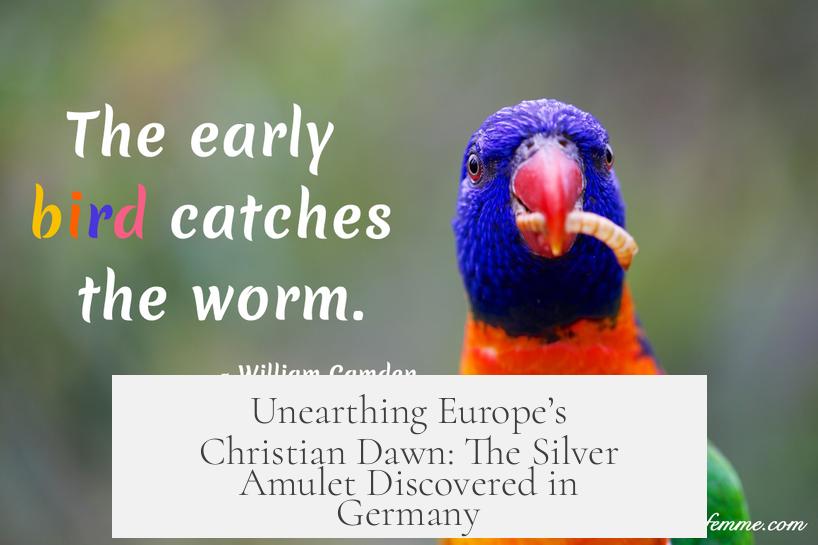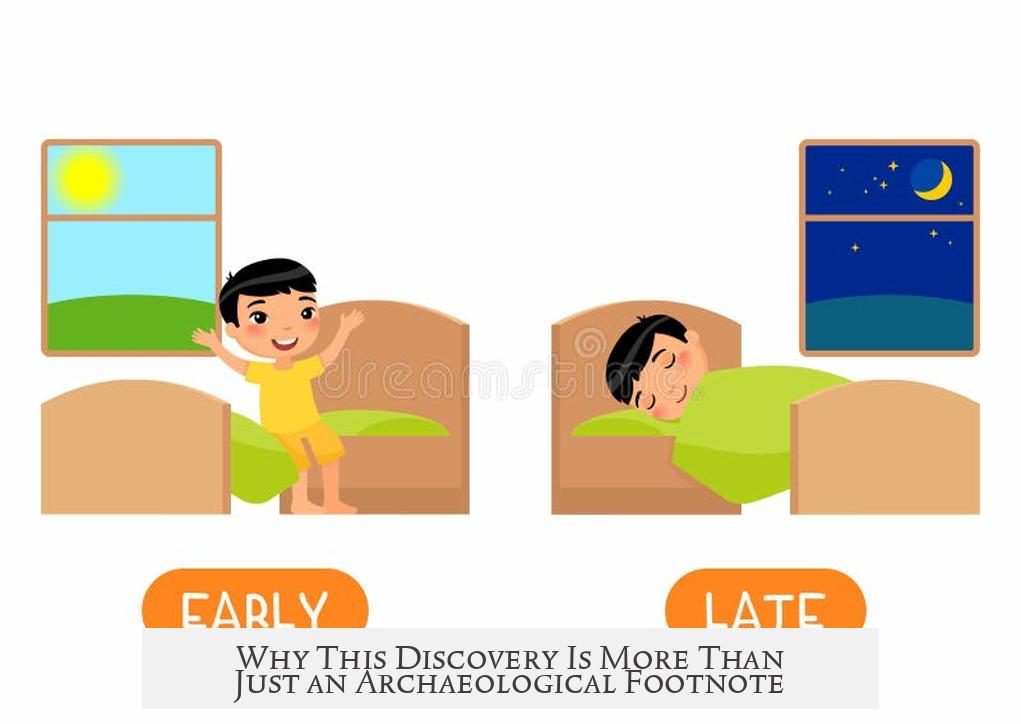A silver amulet discovered in Germany provides the earliest known evidence of Christianity in Europe north of the Alps, dating back to 230-270 AD. This find demonstrates the early spread of Christianity beyond the Roman heartlands during the 3rd century. The amulet confirms that Christian beliefs had already reached this region well before widespread Christianization occurred a millennium later.
The silver amulet was found inside a Roman grave, possibly belonging to an official or nobility, located in a Roman city in present-day Germany. This context highlights Christianity’s presence within Roman societal structures at this early date. Researchers speculate about the individual’s identity, posing questions about whether the person was a local or a traveling believer spreading Christian teachings.
The amulet contains an inscribed silver foil rolled tightly inside. This foil was extremely delicate, with a thickness so fine it risked disintegration if unrolled. Early examinations in 2019 using microscopy and X-rays revealed the presence of words, but the text could not be fully accessed until advanced imaging techniques became available.
In May 2024, scientists from the Leibniz Center for Archaeology in Mainz employed high-resolution CT scanning to digitally unroll and reconstruct a 3D model of the foil. This process allowed them to decipher the inscriptions, which consist of early Christian texts. Ivan Calandra, head of the imaging lab, described the technical challenge: the foil had been rolled tightly and pressed over 1800 years, yet CT scanning enabled digital restoration without physically damaging the artifact.
This discovery sheds light on how Christianity rapidly spread through parts of the Roman Empire north of the Alps during the 3rd century AD. It also provides a rare glimpse of religious life in this region before Christianity became dominant. Ongoing research, including potential DNA analysis, aims to clarify the individual’s origin and role in this early Christian community.
- The amulet dates to 230-270 AD, confirming Christianity’s early presence north of the Alps.
- CT scanning allowed digital unrolling and reading of the fragile silver foil inscription.
- Found in a Roman grave within a Roman city, suggesting Christianity’s integration in Roman society.
- Research continues to understand the individual’s identity and spread of Christian beliefs.
Unearthing Europe’s Christian Dawn: The Silver Amulet Discovered in Germany

If you ever doubted how quickly Christianity spread across Europe, a silver amulet found in Germany dating back to 230-270 AD is about to set the record straight. It is the earliest tangible proof that Christianity had reached Europe north of the Alps far earlier than many scholars thought. Quite a revelation, wouldn’t you agree?
Let’s unwrap the story behind this tiny but mighty artifact—and why it matters more than you might expect.
The Dawn of Christianity in a Pre-Christian Europe
Imagine Europe before Christianity took hold—gods varied by region, rituals rich and plentiful, yet no sign of the cross. The silver amulet paints a completely different picture, showing Christianity’s message was already resonating with people in the 3rd century AD, north of the imposing Alps.
This time frame, 230-270 AD, is surprisingly early for Christian influence in that region. It nudges historians to rethink how fast Christianity scattered across the continent.
Christianity’s rapid spread speaks volumes. It’s not just about religion; it’s about ideas traveling fast, transforming cultures, and reshaping lives centuries before the continent was fully Christianized. The amulet is a silent witness to this pivotal transition.
From Hair-Thin Mystery to Deciphered Revelation: The Amulet’s Inscription
Now, cracking open the amulet’s secret wasn’t exactly like peeling off a sticker. The silver foil inside is unbelievably thin—so fragile that touching it would cause it to crumble instantly. Researchers had to rely on more delicate methods than just “unrolling” it.
Enter the high-tech heroes: microscopic examinations and X-rays done in 2019 showed that tiny words were etched on this sliver of metal. But seeing words isn’t the same as reading them. Years passed without deciphering the text. The foil’s thinness, creases, and the passage of nearly two millennia all added layers of difficulty.
Fast forward to May 2024. Researchers at the Leibniz Center for Archaeology in Mainz (quick shoutout to cutting-edge science) used CT scanners to create a detailed, 3D model of the foil. Ivan Calandra, the imaging lab chief, explains it well: the sheet was rolled, creased, and flattened, making the text hidden within nearly impossible to read the old-fashioned way.
By digitally unrolling the silver sheet, the entire inscription finally came to light. It’s like peeling off layers of history without harming a single atom. This breakthrough lets us read the earliest Christian message north of the Alps.
What the Amulet Tells Us—and What It Still Doesn’t
The amulet’s very presence in a Roman city intrigues historians. The city’s Roman roots complicate the story. Was the wearer a Roman official? A noble? Or perhaps a Germanic settler living within Roman territory?
Answering these questions can reveal more about how Christianity spread—not necessarily just through official Roman channels, but perhaps via everyday people, travelers, or missionaries.
- DNA testing of the grave’s occupant is a promising next step. Such analysis could identify whether the individual was local or a traveler spreading Christianity’s word. It’s a fascinating thought: personal stories wrapped up with bigger historical currents.
- Understanding the wearer’s identity would also clarify if Christianity penetrated only Roman-influenced areas initially or if it quickly found footholds among Germanic peoples.
Despite its Roman city origin, this amulet still symbolizes a seismic shift. It serves as a marker that Christianity was not just a Mediterranean phenomenon but was penetrating northern Europe earlier than expected.
Why This Discovery Is More Than Just an Archaeological Footnote

Most archaeological finds require patience to appreciate. This silver amulet cuts to the point—Christianity’s power to resonate deeply and spread rapidly. It challenges old, lingering ideas of a slow, patchy Christian expansion northward.
The amulet offers a window into the lived religious experience of individuals 1,800 years ago. It’s a personal talisman from a person who likely carried hope, faith, or protection with them, reflecting a spiritual landscape in flux.
Also, it’s a fantastic example of how modern technology can breathe life—or at least clear text—into ancient mysteries. Would you have imagined that CT scans could “digitally unroll” a 2,000-year-old silver sheet? It sounds like something out of a sci-fi novel.
What Can We Learn From This? Practical Tips for History Buffs and Curious Minds
- Keep an Open Mind About History. Discoveries like this remind us that history is dynamic, not static. What we assume today might be upended tomorrow by a tiny piece of silver.
- Appreciate the Blend of Science and Humanities. Archaeology heavily relies on technology now. Keeping track of advances like 3D scanning can make you appreciate artifacts even more.
- Look at Artifacts as Storytellers. Every item, from a silver amulet to a broken pot, can speak volumes about cultures, beliefs, and personal journeys if we listen carefully.
Final Thoughts: A Tiny Silver Amulet with a Heavy Message
This silver amulet isn’t just jewelry or a dusty relic. It’s a beacon illuminating Christianity’s early European roots. It challenges old narratives, demonstrates the movement of faith across borders, and invites deeper research on identity, culture, and religion in Roman-era Europe.
Next time you think of Europe’s Christian history, picture this fragile silver scroll, literally unwrapped with the precision of science, whispering its message across 1,800 years. It makes you wonder—what other small artifacts are out there, waiting quietly to rewrite history?




